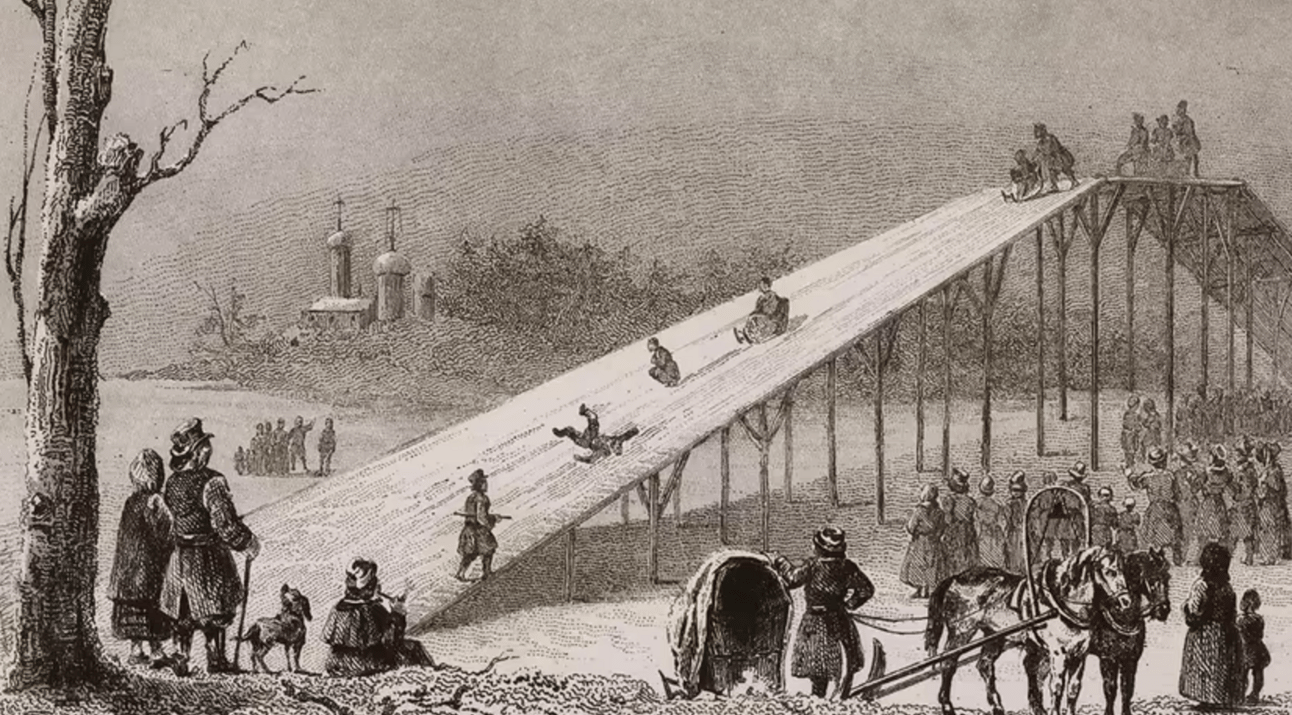The idea for roller coasters came from a Russian winter sledding pastime where people would slide down hills of ice.

Long before amusement parks and steel tracks, thrill-seekers in 18th-century Russia were braving the cold for a different kind of ride. These early daredevils slid down towering wooden ramps covered in ice, sometimes reaching heights of 70 feet and speeds that would make even modern coaster fans gasp.
Called "Russian Mountains," these ice slides were the original joyrides. Riders would sit on sleds made of wood or blocks of ice lined with straw, flying down steep slopes purely for fun. Some of the most elaborate ramps had stairs for climbing up and even rails to keep sliders on track, a chilly blueprint for today’s roller coasters.
When the idea caught on in warmer places like France, inventors had to adapt. Without ice, they turned to wheels and tracks. By the early 1800s, the first wheeled roller coasters appeared, setting the stage for the loop-de-loops and heart-dropping drops we know today.
The development of the roller coaster as it is known today, with thrilling drops and turns, primarily occurred in the United States, especially at Coney Island in New York.
LaMarcus Thompson is often credited with building the first commercially successful roller coaster, the Switchback Gravity Pleasure Railway, at Coney Island in 1884. This event marked a turning point, leading to the development of more elaborate designs and the Golden Age of roller coasters in the 1920s.
id: 2025-05-13-10:46:03:466t